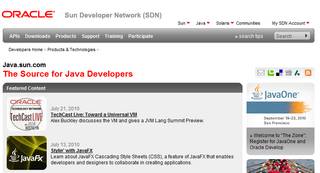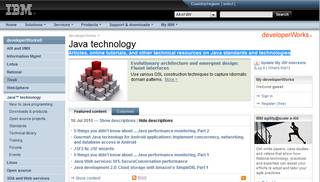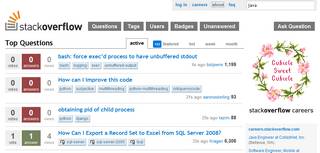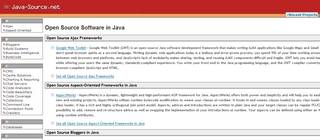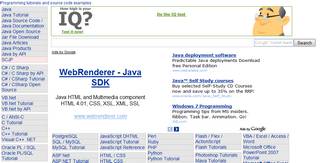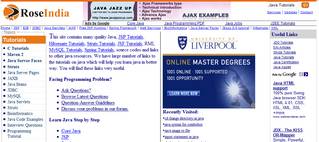import java.io.BufferedReader;
import java.io.IOException;
import java.io.InputStreamReader;
import java.io.OutputStreamWriter;
import java.io.PrintWriter;
import java.io.UnsupportedEncodingException;
import java.net.HttpURLConnection;
import java.net.MalformedURLException;
import java.net.Proxy;
import java.net.URL;
//import java.net.URLConnection;
import java.net.URLEncoder;
import java.util.*;
/**
*
* @author sreenath (https://github.com/tacticiankerala/Unofficial-Way2Sms-API-using-JAVA/blob/master/Way2SMS.java) modified by Abhimanyu singh rathore (http://ibm-tgmc.blogspot.com)
*/
public class Way2Sms {
// private URLConnection sendSMSConnection;
private String sessionCookie;
private Proxy proxy;
private String baseurl;
private static Random svcRand = new Random();
private int a;
//Function to support connection through an HTTP Proxy
public void setProxy(String proxyHost,int proxyPort)
{
proxy=new Proxy(Proxy.Type.HTTP,java.net.InetSocketAddress.createUnresolved(proxyHost, proxyPort));
}
//Logging in to Way2sms and returning the authentication cookie
//No need to Give the cookie back to sendSMS() but cookie is returned for expanding the flexibility of the code
public String loginWay2SMS(String userName,String password)
{
String cookie=null;
URL urlLogin;
String loginContent;
HttpURLConnection loginConnection;
if(userName==null || userName.isEmpty())
{
System.err.println("A Valid User Name must be present!");
System.exit(0);
}
if(password==null || password.isEmpty())
{
System.err.println("A Valid Password must be present!");
System.exit(0);
}
try {
//UTF-8 encoding is the web standard so data must be encoded to UTF-8
userName=URLEncoder.encode(userName, "UTF-8");
password=URLEncoder.encode(password, "UTF-8");
String tologinurl=baseurl+"Login1.action";
// urlLogin=new URL("http://site5.way2sms.com/Login1.action");
urlLogin=new URL(tologinurl);
if(proxy==null)
{
loginConnection = (HttpURLConnection) urlLogin.openConnection();
}
else
{
loginConnection = (HttpURLConnection) urlLogin.openConnection(proxy);
}
loginContent="username=" + userName + "&password=" + password+"&button=Login";
//Faking that we are from a valid client
loginConnection.setDoOutput(true);
loginConnection.setRequestProperty("User-Agent","Mozilla/5.0 (Windows; U; Windows NT 6.0; en-US; rv:1.9.0.5) Gecko/2008120122 Firefox/3.0.5");
loginConnection.setRequestProperty("Content-Length", String.valueOf(loginContent.length()));
loginConnection.setRequestProperty("Content-Type","application/x-www-form-urlencoded");
loginConnection.setRequestProperty("Accept", "*/*");
loginConnection.setRequestProperty("Referer", "http://site5.way2sms.com//entry.jsp");
loginConnection.setRequestMethod("POST");
loginConnection.setInstanceFollowRedirects(false);
//Writing the Content to the site
PrintWriter printWriter = new PrintWriter(new OutputStreamWriter(loginConnection.getOutputStream()), true);
printWriter.print(loginContent);
printWriter.flush();
printWriter.close();
//Reading the cookie
cookie = loginConnection.getHeaderField("Set-Cookie");
} catch (MalformedURLException ex) {
System.err.println("Login URL Error");
System.exit(0);
} catch (UnsupportedEncodingException ex) {
System.err.println("Error in encoding Username or Password");
System.exit(0);
}catch (IOException ex) {
System.err.println("Can not connect to Login URL");
//retrying
if(a==6)a=0;
a++;
baseurl="http://site"+a+".way2sms.com/";
System.out.println(baseurl);
loginWay2SMS(userName,password);
// System.exit(0);
}
if(cookie==null || cookie.isEmpty())
{
System.err.println("Some error occured...Try again in a few seconds..If still problem exists check your username and password");
}
sessionCookie=cookie;
return cookie;
}
public void sendSMS(String phoneNumber,String message,String action,String username,String password)
{
if(phoneNumber==null || phoneNumber.isEmpty())
{
System.err.println("Enter A Valid Phone Number");
System.exit(0);
}
else
{
try
{
// long testLong=Long.valueOf(phoneNumber);
}catch(NumberFormatException ex)
{
System.err.println("Invalid Phone Number");
System.exit(0);
}
}
if(message==null|| message.length()==1|| message.isEmpty())
{
System.err.println("Enter A Valid Phone Number");
System.exit(0);
}
else if(message.length()>140)
{
System.err.println("Message should be less than 140 characters");
}
if(action==null || action.isEmpty())
{
System.err.println("Enter Valid Action to send Message");
System.exit(0);
}
URL sendURL;
HttpURLConnection sendConnection;
String sendContent;
try {
message=URLEncoder.encode(message, "UTF-8");
//sendURL=new URL("http://site5.way2sms.com/FirstServletsms?custid=");
String tosendurl=baseurl+"quicksms.action?";
//sendURL=new URL("http://site5.way2sms.com/quicksms.action?");
sendURL=new URL(tosendurl);
if(proxy==null)
{
sendConnection = (HttpURLConnection) sendURL.openConnection();
}
else
{
//sendConnection = (HttpURLConnection) sendURL.openConnection(proxy);
sendConnection = (HttpURLConnection) sendURL.openConnection();
}
// sendContent="custid=undefined&HiddenAction=instantsms&Action="+action+"&login=&pass=&MobNo="+ phoneNumber+ "&textArea="+message;
// sendContent="custid=undefined&HiddenAction=instantsms&Action=sa65sdf656fdfd&login=&pass=&MobNo=9543246247&textArea=hello";
// working url for me sendContent="HiddenAction=instantsms&catnamedis=Birthday&textfield2=+91&MobNo="+phoneNumber+"&txtLen=5&textArea="+message+"&Action=sa65sdf656fdfd&login=9543246247&pass=*********";
sendContent="HiddenAction=instantsms&catnamedis=Birthday&textfield2=+91&MobNo="+phoneNumber+"&txtLen=5&textArea="+message+"&Action="+action+"&login="+username+"&pass="+password+"";
sendConnection.setDoOutput(true);
sendConnection.setRequestProperty("User-Agent","Mozilla/5.0 (Windows; U; Windows NT 6.0; en-US; rv:1.9.0.5) Gecko/2008120122 Firefox/3.0.5");
sendConnection.setRequestProperty("Content-Length", String.valueOf(sendContent.getBytes().length));
sendConnection.setRequestProperty("Content-Type","application/x-www-form-urlencoded");
sendConnection.setRequestProperty("Accept", "*/*");
sendConnection.setRequestProperty("Cookie", sessionCookie);
sendConnection.setRequestMethod("POST");
sendConnection.setInstanceFollowRedirects(false);
PrintWriter printWriter = new PrintWriter(new OutputStreamWriter(sendConnection.getOutputStream()),true);
printWriter.print(sendContent);
printWriter.flush();
printWriter.close();
//Reading the returned web page to analyse whether the operation was sucessfull
BufferedReader bufferedReader = new BufferedReader(new InputStreamReader(sendConnection.getInputStream()));
StringBuilder SendResult=new StringBuilder();
String line;
while ((line=bufferedReader.readLine()) != null)
{
SendResult.append(line);
SendResult.append('\n');
//Message has been submitted successfully
}
if(SendResult.toString().contains("Message has been submitted successfully"))
{
System.out.println("Message sent to "+phoneNumber+" successfully.");
}
else
{
System.err.println("Message could not send to "+phoneNumber+". Also check login credentials");
System.out.print(SendResult.toString());
}
bufferedReader.close();
}catch (UnsupportedEncodingException ex) {
System.err.println("Message content encoding error");
System.exit(0);
}catch (MalformedURLException ex) {
System.err.println("Sending URL Error");
//retrying
if(a==6)a=0;
a++;
baseurl="http://site"+a+".way2sms.com/";
System.out.println(baseurl);
loginWay2SMS(username,password);
sendSMS(phoneNumber,message,action,username,password);
// System.exit(0);
}catch (IOException ex) {
System.err.println("Sending URL Connection Error");
System.exit(0);
}
}
public void logoutWay2SMS()
{
try {
HttpURLConnection logoutConnection;
URL logoutURL;
String logouturlmy=baseurl+"jsp/logout.jsp";
// logoutURL = new URL("http://site3.way2sms.com/jsp/logout.jsp");
logoutURL = new URL(logouturlmy);
if(proxy==null)
{
logoutConnection = (HttpURLConnection) logoutURL.openConnection();
}
else
{
logoutConnection = (HttpURLConnection) logoutURL.openConnection(proxy);
}
logoutConnection.setRequestProperty("User-Agent","Mozilla/5.0 (Windows; U; Windows NT 6.0; en-US; rv:1.9.0.5) Gecko/2008120122 Firefox/3.0.5");
logoutConnection.setRequestProperty("Accept", "*/*");
logoutConnection.setRequestProperty("Cookie", sessionCookie);
logoutConnection.setRequestMethod("GET");
logoutConnection.setInstanceFollowRedirects(true);
BufferedReader bufferedReader = new BufferedReader(new InputStreamReader(logoutConnection.getInputStream()));
while ((bufferedReader.readLine()) != null);
bufferedReader.close();
} catch (MalformedURLException ex) {
System.err.println("Logout URL Error");
System.exit(0);
}catch (IOException ex) {
System.err.println("Logout URL Connection Error");
System.exit(0);
}
}
Way2Sms()
{
proxy=null;
//sendSMSConnection=null;
a=svcRand.nextInt(6);
while(a==0)
a=svcRand.nextInt(6);
baseurl="http://site"+a+".way2sms.com/";
System.out.print(baseurl);
}
public static void main(String args[])
{
final String USERNAME="";//REQUIRED
final String PASSWORD="";//REQUIRED
final String ACTION="sa65sdf656fdfd";//REQUIRED :e.g sa65sdf656fdfd In order to understand ACTION value please read the blog
Way2Sms sms=new Way2Sms();
//HTTP PROXY
//sms.setProxy("10.1.1.1",8080); //REQUIRED ONLY IF CONNECTING THROUGH A PROXY
StringBuilder phoneNumber= new StringBuilder();
StringBuilder message=new StringBuilder();
/* if(args.length>0)
{
if(args[0].toLowerCase().compareTo("phone")==0)
{
int i=1;
while(args[i].toLowerCase().compareTo("message")!=0)
{
phoneNumber.append(args[i]);
phoneNumber.append(';');
i++;
}
for(i=i+1;i<args.length;i++)
{
message.append(args[i]);
message.append(' ');
}
}
else
{
System.out.println("USAGE : Way2SMS phone <phonenumber1> <phonenumber2> ... message <message>");
System.exit(0);
}
}
else
{ */
String msg2=" hi hru"; //msg to be sent
phoneNumber.append("0124354555555"); /*want to use as bean ??? pass the parametrs for phone,message to send multiple number just insert ';' between them and pass as a string */
phoneNumber.append(';');
if(msg2==null||msg2==""||msg2==" ")
{System.out.print("please enter msg of length >0");
System.exit(0);
}
message.append(msg2);
message.append(' ');
// System.out.println("USAGE : Way2SMS phone <phonenumber1> <phonenumber2> ... message <message>");
// System.exit(0);
/* }
*/ //baseurl 1:http://site4.way2sms.com/ 2:http://site4.way2sms.com/ 3.http://site1.way2sms.com/
String cookie=sms.loginWay2SMS(USERNAME,PASSWORD);
System.out.println(cookie);
String textMessage=message.toString();
String strPhoneNumber=phoneNumber.toString();
String arrPhoneNUmber[]=strPhoneNumber.split(";");
for(int i=0;i<arrPhoneNUmber.length;i++)
{
sms.sendSMS(arrPhoneNUmber[i], textMessage, ACTION,USERNAME,PASSWORD);
}
sms.logoutWay2SMS();
}
}
Reference Links:
http://ibm-tgmc.blogspot.in/2011/12/sending-sms-via-way2sms-using-java.html
http://jtechbits.blogspot.in/2011/06/sending-sms-through-way2sms-in-java.html





